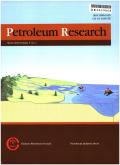世界三大油气成藏体系
IF 4
Q1 Earth and Planetary Sciences
引用次数: 0
摘要
原油和天然气是由沉积盆地岩石中的有机质生成的。通过对全球含油气盆地的深入系统研究,认识到油气田分布具有高度的非均质性,大部分油气富集在少数沉积地层中。烃源岩是控制沉积盆地原油和天然气分布的最重要因素。寻找含油气盆地的先决条件是寻找烃源岩。有机质丰度决定了烃源岩的质量和生烃量。在沉积盆地中,生物养分来自河流。生物营养是控制烃源岩繁殖程度和有机质丰度的关键因素,是沉积盆地油气生成量和油气资源富集程度的控制因素。世界上油气主要分布在三大体系:河湖体系、河湾体系和河三角洲体系。江湖体系是陆相油气分布的主要位置。湖相油主要由沉积岩石中保存的湖泊死藻有机质产生。藻类的生长主要依赖于来自河流的营养物质,特别是那些历史悠久、流经广阔区域的河流。营养物中含有大量溶解于水中的磷、钾等矿物质,为藻类生长提供了先决条件,为优质烃源岩的形成提供了保证。河湾体系是海洋石油分布的主要区域。海湾是河流的入海口,它带来了丰富的矿物质,促进了藻类等水生生物的生长和增殖。海湾相对封闭,与海洋的交流受到限制,因此海湾也有利于有机质的保存。含煤天然气是世界上分布最广、储量最大的天然气;许多巨型煤系气田位于河流三角洲体系。河流带来的沉积物是高等植物生长的肥沃土壤,河流三角洲平原的原生高等植物是煤系气源岩形成的坚实物质基础。三角洲储层发育良好,储盖构型良好,有利于天然气富集和成藏。本文章由计算机程序翻译,如有差异,请以英文原文为准。
Three systems of the oil and gas formation in the world
Crude oil and natural gas are generated by organic matters in rocks in sedimentary basins. After incisive and systematic research on global petroliferous basins, it is realized that the distribution of oil and gas fields is highly heterogeneous, and most of oil and gas are enriched in a few sedimentary strata. Source rocks are the most significant factor that governs the distribution of crude oil and natural gas in sedimentary basins. The prerequisite to finding out a petroliferous basin is to search for source rocks. The abundance of organic matters determines the quality of source rocks and the quantity of generated hydrocarbons. In a sedimentary basin, the biological nutrients come from rivers. The biological nutrition is the key factor that controls the degree of reproduction and organic matter abundance in source rocks, which is a governing factor for the amount of oil and gas generated and the degree of petroleum resource enrichment in the sedimentary basin. Oil and gas are mainly distributed in three systems in the world: river-lake system, river-gulf system and river-delta system. The river-lake system is the main location of continental oil distribution. Lacustrine oil is mainly produced by organic matters originating from dead algae in lakes preserved in sedimentary rocks. Algae growth mainly depends on the nutrients that come from rivers, especially those with a long history, flowing through a wide area. The nutrients have a large amount of phosphorus, potassium and other minerals dissolved in water, providing a prerequisite to the growth of algae and a guarantee of the formation of high-quality source rocks. The river-gulf system is the main location of marine oil distribution. The gulf is the estuary of the river, which brings abundant minerals to promote the growth and proliferation of aquatic organisms such as algae. Gulfs are relatively closed and their exchange with the ocean is restricted, therefore the gulf is also conducive to the preservation of organic matters. The coaliferous gas has the world's most widely distributed and biggest reserves; many giant coaliferous gas fields are located in the river-delta system. The sediments brought by the river are fertile soil for the growth of higher plants, and the native higher plants on the river-delta plain are the solid material basis for the formation of coal-measure gas source rocks. Well-developed delta reservoirs with good reservoir-caprock configuration are beneficial for natural gas enrichment and accumulation.
求助全文
通过发布文献求助,成功后即可免费获取论文全文。
去求助
来源期刊

Petroleum Research
Earth and Planetary Sciences-Geology
CiteScore
7.10
自引率
0.00%
发文量
90
审稿时长
35 weeks
 求助内容:
求助内容: 应助结果提醒方式:
应助结果提醒方式:


